"Un-staged documentary footage shot and edited by Sallie Wagner. Sallie's description of the film: 'Shorty Boys, Little Shorty building a hogan, Crip Chee and his hogan, grandson in doorway. Blackrock in front of hogan, Tchindi, Rose Martin doing laundry, cooking shelter at squaw dance, Hosteen Glish getting water, Bent Knee getting wood, Hosteen Glish making a canoe out of a log, Hosteen Glish's granddaughter weaving, digging yucca root for soap, Navajo washing her hair, Hosteen Glish making a cradle board'." New Mexico State Archives.
"Documentary: Depicts lives of children in the Belgian Congo and French Cameroon." National Archives.
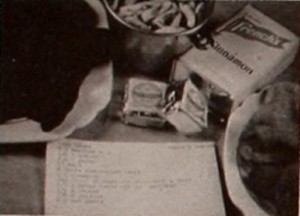
"Christmas at our House reflects the joy that Mrs. Olaf M. Olsen must have experienced in making it. It is an utterly sincere and delightful record of old Norwegian Christmas customs, carried over and observed in the United States by second generation Americans. It presents, in minute detail, the elaborate cookery and decorations of Christmas in Norway. The recipe for each dish and the kitchen utensils required are shown in closeup at the beginning of the individual sequences. Each step in preparing the particular food is then presented in orderly fashion from start to finish. This pattern may sound prosaic, but there is a charm about this film that defies any feeling of monotony. The choice of camera viewpoint and the lighting and exposure in this movie leave nothing to be desired. In fact, the camera handling is so fine that mechanical factors cease to exist, and the spectator feels as if he were actually present within the scene, to watch the action. This movie's titles, done in color, are most attractive, while the editing of the entire picture is smooth and interesting." Movie Makers, Dec. 1941, 541, 563.
"The producer must be a chef because he shows the problems of making a Baked Alaska in the best French fashion. He does a very beautiful job of it, right up to the triumphant finish." PSA Journal, Nov. 1956, 45.
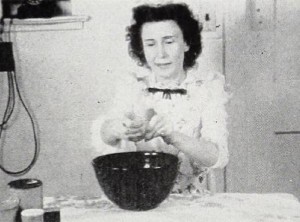
"With the help of four wild ducks and two cooks, Dan Billman, jr., has produced a gay film of contrasting culinary abilities. With understandable economy, he has allotted only one duck to the novice cook, while three are given to a jewel of the kitchen. The preparation of the birds in competent hands is a delight to watch, for the closeups of each step are examples of superb interior lighting. The abandon with which the beginner mixes the dressing and what happens to her stuffed duck in cooking are presented in ludicrous contrast. The Inside Story has as its climax an attractive sequence of serving the perfectly roasted birds at a family dinner. A light touch is added by gay titles and their accompanying sketches, while special mention must be made of the fine scene shot from outside the house at night, to reveal the warm interior of a pine paneled room through the black tracery of the casement window frames." Movie Makers, Dec. 1945, 494-495.
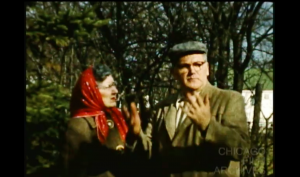
"An amateur film made by and starring the husband and wife duo, John & Evelyn Kibar. The film follows John, a cake decorator, as he struggles to keep up with the bakery’s cake orders. Title cards with dialogue are dispersed throughout the film." Chicago Film Archives
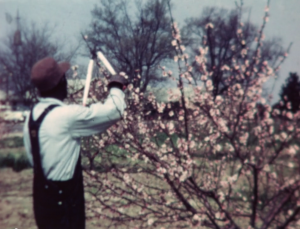
"The life cycle of the peach -- from peach blossom to peach pie" (Holmes, 2018).
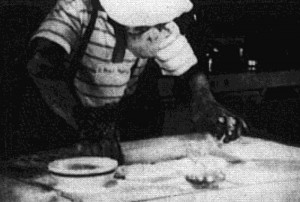
"J. Fred Muggs, a chimpanzee, undertakes to make and bake a pizza pie, and then eats it. Mr. Muggs at work may remind some of us of one or more events in the hazy past. He goes at the pie making with considerable proficiency although he is a bit of a comic. Like many cooks, he samples the ingredients as he works. Laughs enough for all" PSA Journal, Oct. 1961, 49
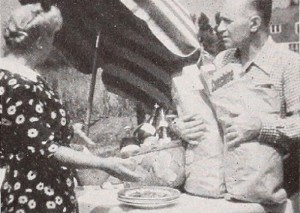
"George Mesaros, who has demonstrated his competence as a maker of good movies in other fields, turns to humor in this film comment on wartime conditions. The point of the story — for it is the foray and not the tale that is pointless — turns on providing for a picnic in the yard of the home. While the master of the house is shopping with ration points, the skeptical family gets, from the Victory garden, cooks and eats the alfresco feast, at the end of which Father — who really did find something in the shops — returns with loaded arms. First class Kodachrome pictures and a well knit continuity are used by Mr. Mesaros to bring to American audiences something of the spirit of easy and natural outdoor fun with food that for so long characterized the Europe of happy memory. Some of the scenes of cooking are so realistic that one almost reaches for what is shown on the screen." Movie Makers, Dec. 1943, 478.